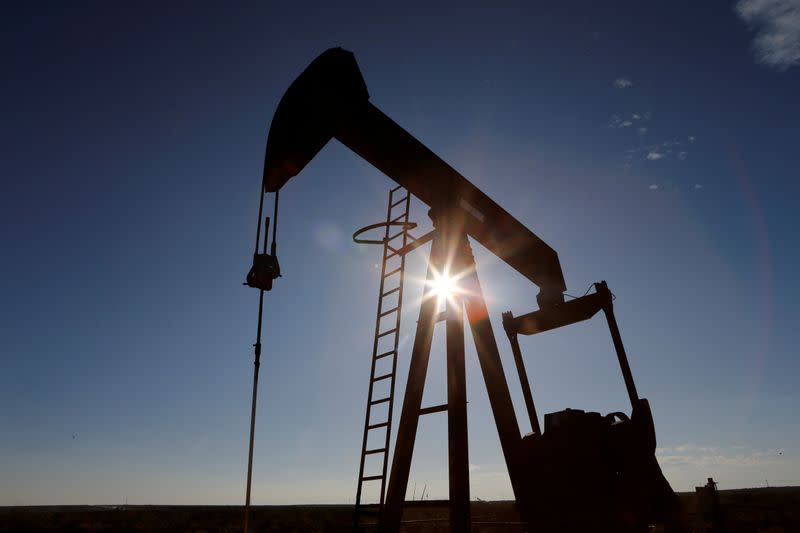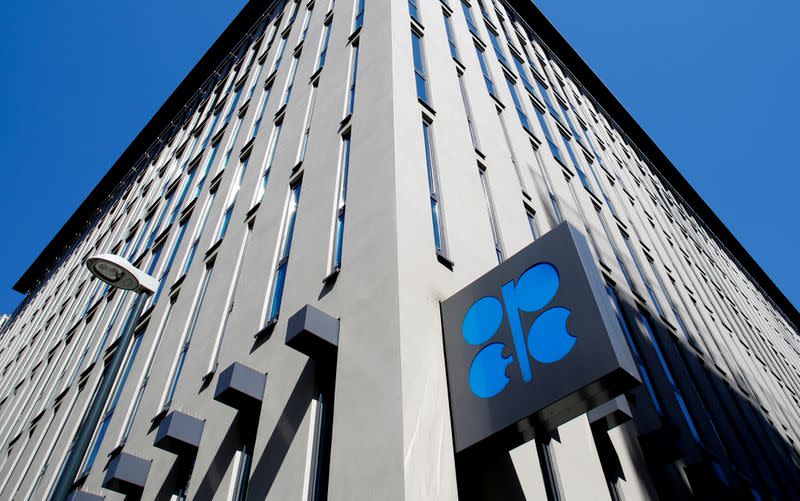Oil prices edge higher after output cut, but demand worries weigh
By Shadia Nasralla
LONDON (Reuters) - Oil prices edged higher on Monday in a muted response to a global deal on record output cuts amid concerns over whether the pact will head off an oil glut as the coronavirus pandemic hammers demand.
The OPEC+ group of oil producers, comprising the Organization of the Petroleum Exporting Countries, Russia and other countries, agreed at the weekend to cut output by 9.7 million barrels per day (bpd) in May and June, representing about 10% of global supply.
Saudi Energy Minister Prince Abdulaziz bin Salman said nations in the G20 group had pledged to cut about 3.7 million bpd and that strategic reserves purchases would reach roughly 200 million barrels over the next couple of months, bringing the total reduction to about 19.5 million bpd.
Brent crude futures were up 53 cents, or 1.7%, at $32.01 a barrel by 1413 GMT, having opened at a session high of $33.99. U.S. West Texas Intermediate (WTI) crude was up 86 cents, or 3.8%, at $23.62, having earlier hit $24.74.
U.S. President Donald Trump praised the oil supply deal, the possibility of which he had first touted on April 2.
Saudi Arabia, Kuwait and the United Arab Emirates volunteered to make cuts even deeper than those agreed, which would effectively bring down OPEC+ supply by 12.5 million bpd from current levels.
Saudi Arabia on Monday set its May official selling prices (OSP) for crude, selling oil to Asia more cheaply and keeping prices flat for Europe while raising them for the United States.
Meanwhile, analysts cast doubts on producers' likely compliance with the production cuts, not least since Mexico got off with smaller cuts than initially demanded.
Even factoring in full compliance, concern over demand weakness served to keep a lid on oil price gains.
"If ... indications that G20 will join in with more cuts of up to an additional 10 million bpd prove true and take an official character, then we can expect a relative price recovery," Rystad energy analysts said.
"Still, due to the stock build that April will have accumulated by then, prices will not recover this year to pre-COVID-19 levels."
Worldwide fuel consumption is down roughly 30% because of the COVID-19 pandemic that has killed more than 100,000 people worldwide and kept entire nations on lockdown.
"We do not expect a sustained recovery in the oil price until pent-up demand is released in Q3," said Harry Tchilinguirian of BNP Paribas.
Outside of OPEC+, Canada has signalled a willingness to cut and Norway said it would decide about its cut "in the near future".
The United States, where antitrust legislation makes it hard to act in tandem with groups such as OPEC, has said that low prices mean its output would already fall by as much as 2 million bpd this year without planned cuts.
Brent's contango - the market structure in which later-dated prices are higher than prompt supplies - widened, highlighting some optimism over the longer-term impact of the OPEC+ cuts but also current oversupply concerns.
Graphic: Brent 6-month contango steeper after global output cut deal https://fingfx.thomsonreuters.com/gfx/ce/jbyprbeqpeo/Brent%20contango.png
"The fundamentals still look incredibly bearish for the weeks and months ahead and imply time spreads should fall into deeper contango from current levels," FGE analysts said.
Citi analysts raised their Brent price forecasts for the third and fourth quarters to $35 and $45 a barrel respectively.
Morgan Stanley has also raised its forecasts by $5 for the second half of the year to between $30 and $35 a barrel.
(Additional reporting by Florence Tan in Singapore; Editing by David Goodman, Jan Harvey and Mark Potter)


